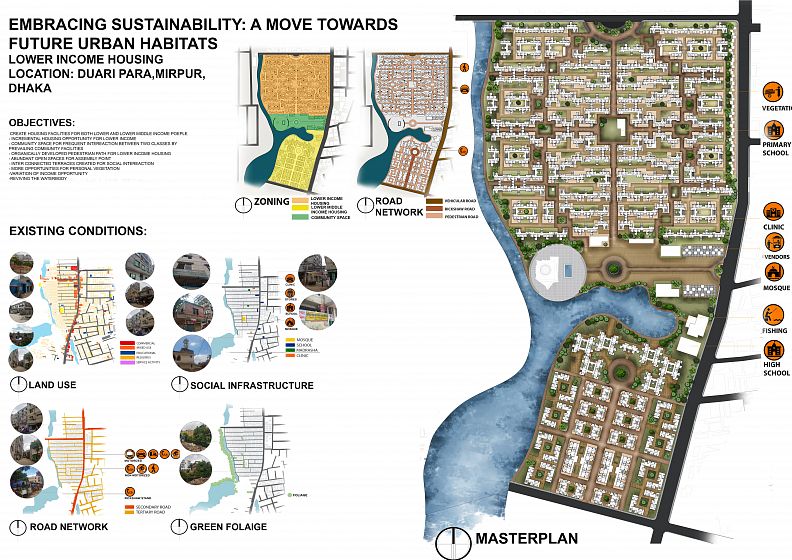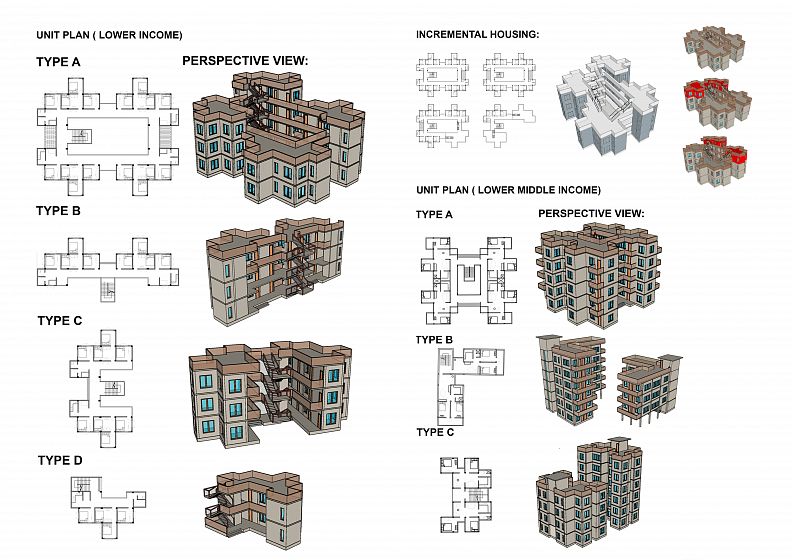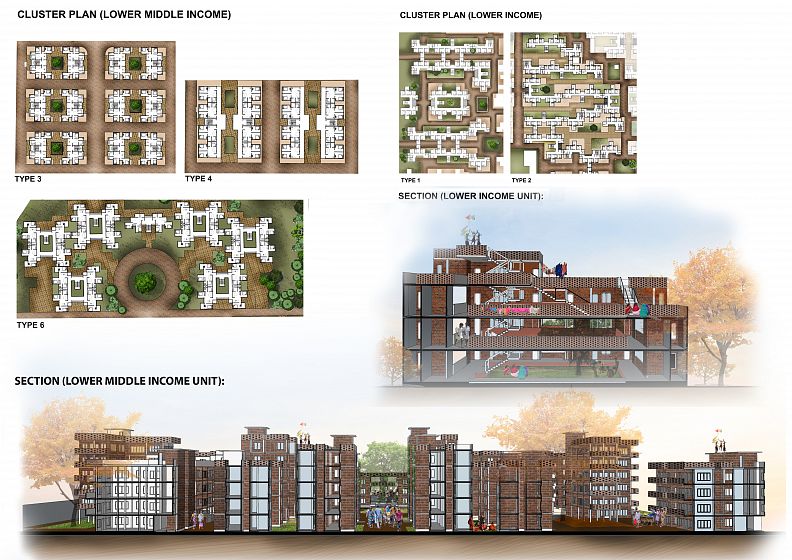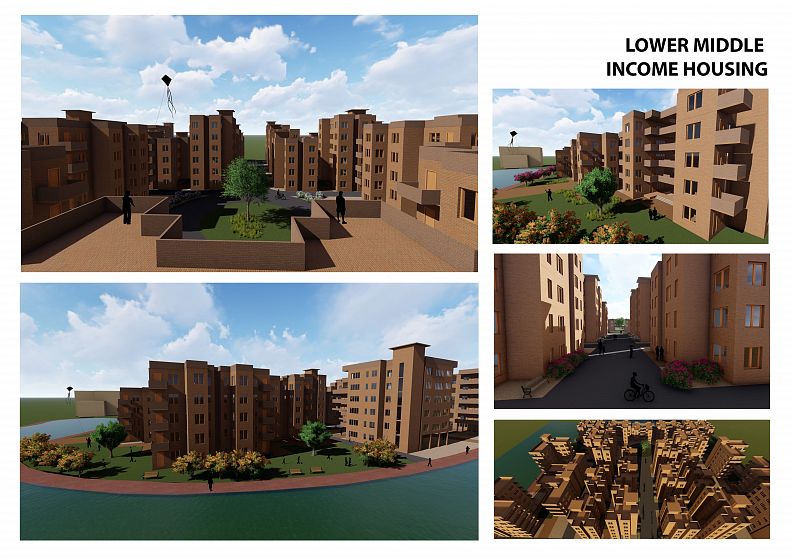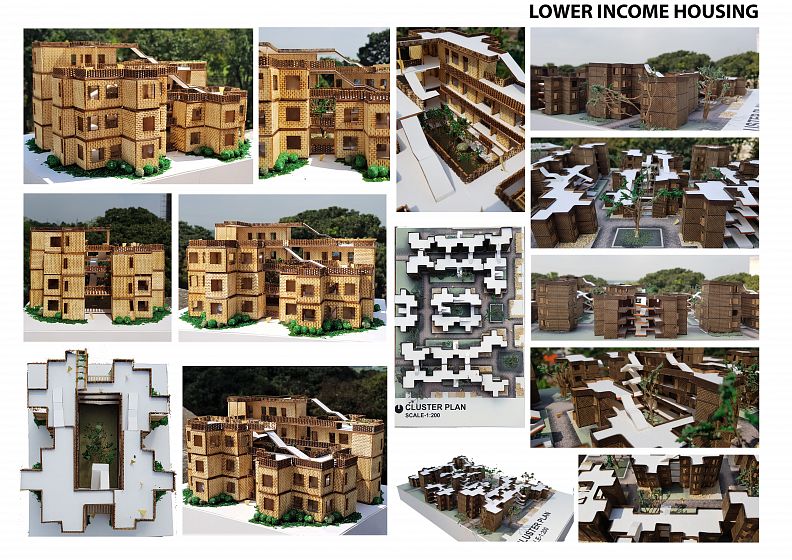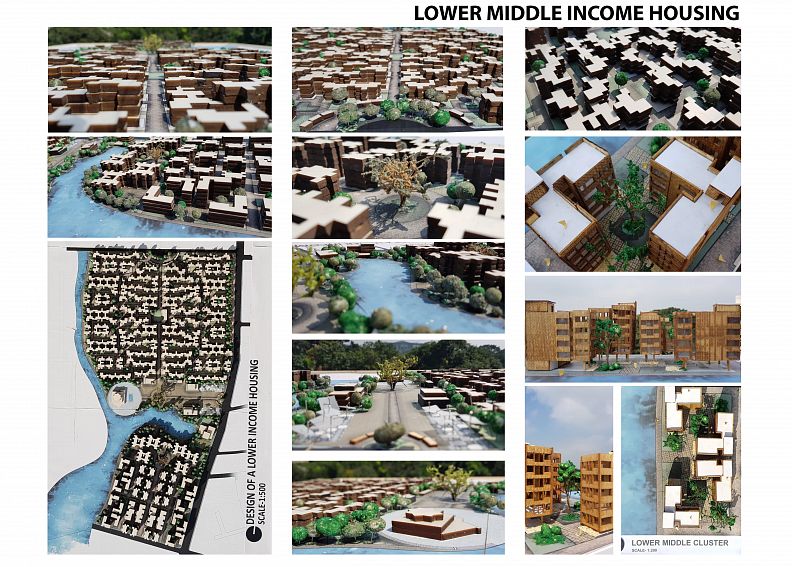Embracing Sustainability: A move towards future urban habitats.

Project idea
In developing countries, affordable housing is a big challenge. One of the first criteria before starting a housing project is- knowing the client, getting to know the people who will live there, their way of living, livelihood and their needs. From local survey and related studies we found out that the people living in the existing site of Duaripara are mostly garments workers, rickshaw pullers, day labourers or are simple self employed or unemployed. So the main focus of our project is building an affordable and sustainable housing for the low-income people which will provide them a healthy and hygienic way of living, make scope for development of cultural, social and economical prosperity.
Project description
The chosen site for the housing project is in an urban context of Dhaka, Bangladesh. The existing conditions are put into consideration and a new set of objectives has been set for the project.
- Create housing facilities for both lower and lower middle income people
- Incremental housing opportunity for lower income
- Common social gathering space for both classes of people
- Organically developed pedestrian path for the lower income people respecting the organic trait of rural Bengal.
- Abundant open spaces working as assembly point
- Interconnect terrace spaced for primary social interaction
- More opportunities for personal vegetation
- Variation of income opportunity
- Reviving the water body
Technical information
In the site, there is an existing mosque. Respecting the mosque as the centre of social gathering we divided the whole area in 3 basic zones. The main entry leads to the middle common zone, which is the place for social gathering. Surrounding this social gathering area is a secondary school, a rehabilitation centre, vocational school, bazaar, vendor market and clinic. On one side of this zone is the lower income zone and the other space is designed for lower middle income people. The other zones have their respective secondary entries.
As for the lower income zone the entry of any vehicle inside is restricted. Their primary mode of transportation is rickshaw; there is a rickshaw stand in the entry point of the housing. We formulated some basic units, and formed them up into a module of clusters. As for the unit some specific points are to mentioned. There are mostly single families living in a room consisting of a father, mother and 2 or more children. There are some extended families as well consisting of grandparents with the others. Now for many case studies and real scenarios we see that when the units are provided with separate washroom and kitchen space they are being occupied by some influential political people and it doesn’t actually benefit the low income people. So to solve this problem architecturally we proposed to design shared service areas. This actually works because we did some local surveys where they use joint service areas but they are unhygienic. What we did for our unit design is made sure all the service areas are in east-west corner so that the north-south air circulation doesn’t carry any bad smell and the kitchen areas and bathroom areas are designed at
